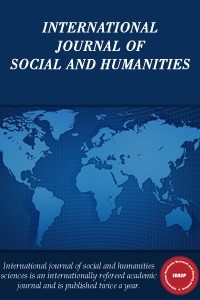DEMOCRATIC CONSOLIDATION IN AFRICA BEYOND ELECTIONS: A STUDY ON DEMOCRATIC INSTITUTIONS- THE JUDICIARY IN GHANA AND KENYA
The
third wave of democratization which hit the world led to a spontaneous wave of
democratization in most African states in the early 1990s. The reinstatement of
democratic governance brought hope and relief to most citizens. This is as a
result of the promulgation and entrenching of human rights clauses in
respective countries constitutions. There is now a clarion call for democracy
to be consolidated. It is significant to mention that Ghana and Kenya have
practiced democracy over two decades. The process of consolidating democracy
has become necessary owing to pockets and mass violence in Ghanaian and Kenyan
elections respectively. The use of minimalists’ conceptualization of measuring
democracy based on elections must be discarded and give way to the maximalists
approach. Dahl refers to this as the polyarchy of democracy. The study is
placed within the liberal democratic theory by Dahl. The central question to
ask is what roles have the judiciary played in consolidating the Ghanaian and
Kenyan democracy from its inception? This is important to address this
fundamental question in the new democracies like Ghana and Kenya because the
more independent the judiciary and other democratic institutions, the higher
the rate of democratic sustenance is guaranteed. This research is significant
because the courts have been used as dispute resolution arena. It aims at
investigating the role that courts have played to consolidate democracy. In
2012 Ghana’s opposition party leader went to the state’s Supreme Court to seek
redress about electoral irregularities and malpractices. While the 2017 Kenyan
elections dispute and irregularities were settled in the court. The study uses
quantitative and qualitative data as its primary data source. Data from the
Afro barometer survey is used. And published court rulings are used.
Qualitative data via interviews of judges and political Parties officials.
Keywords:
Democracy, Elections, Democratization, Democratic Institutions Consolidation,
___
- (KHRC), K. H. (1997). Kayas of Deprivation, Keyas of Blood: Violence, Ethnicity and the State in Coastal Kenya. Nairobi: KHRC.
- Anthony, B. H. (2007). The Concepts and Theories of Modern Democracy. London and New York: Routledge, Taylor and Francis Group.
- Azu, M. (2015). Lessons from Ghana and Kenya: Why Presidential Elec-tion Petition Usually Fail. AFRICAN HUMAN RIGHTS LAW JOURNAL.
- Boafo-Arthur, K. (2007). A decade of liberalism in perspective. In K. Boafo-Arthur, Ghana One decade of the liberal state (pp. 2-3). 7 Cynthia Street, London n1 9jf, UK and Room 400, 175 Fifth Avenue, New York, NY 10010, USA in 2007: published by Zed Books Ltd.
- Cunningham, F. (2002). Theories od Democracy. London and New York: Routledge Tailor and Francis Group.
- Dahl, A. R. (1998). On Democracy. USA: Yale University Press.
- Dahl, R. (1989). Democracy and Its Critics. New Haven and London: Yale Uni-versity Press.
- Dahl, R. (1998). On Democracy. USA: Yale University Press Publishing.
- Fukuyama, F. (1992). The End of History and The Lastman. 1350 Avenue of the Americas, New York, New York 10019: The Free Press.
- Huntington, S. (1991). The Thrid Wave of Democratization in the Late Twentieth Century. University of Oklahoma, USA: University of Oklahoma Press, Norman, Publishing Division of the Univesity.
- Huntington, S. (1996). The Clash of Civilization and Remaking of World Order. 1230 Avenue of the Americas, New York, NY 10020: Simon and Schus-ter Rockefeller Center.
- Kuria, G. (1994). Majimboism, Ethnic Cleansing and Constitutionalism in Ken-ya. Nairobi: KHRC.
- Kurian, George Thomas; Alt. .E James; Chambers, Simone; Garrett, Geof-frey; McClain D. Paula. (2011). Encyclopedia of Political Science. 2300 N Street, NW, Suite 800: CQ Press, a division of SAGE.
- Laakso, L. (2007). Insights into Electoral Violence in Africa. In M. Basedau, G. Erdmann, & A. Mehler, Votes, Money and Violence: Political Par-ties and Elections in Sun-sub Saharan Africa (pp. 204-249). South Africa: Uni-versity of KwaZulu- Natal Press.
- Laakso, L. (2007). Insights into Electoral Violence in Africa. In M. Basedau, G. Erdmann, & a. M. Andreas, Votes, Money and Violence: Political Parties and Elections in Sub-Saharan Africa (p. 226). South Africa: University of KwaZulu- Natal Press.
- Mehler, A. (2007). Political Parties and Violence in Africa: Systematic Re-flec-tions against Empirical Background. In M. Basedau, G. Erdmann, & A. Mehler, Votes, Money and Violence: Political Parties and Elections in Sub-Saharan Africa (p. 209). South Africa: University of Kwazulu- Natal Press, South Africa.
- Naomi, C., Mortimer, R., & Ravenhill, J. a. (1988). Politics and Society in Con-temporary Africa. 1800 30th street, Boulder, Colorado 80301 United States of America: Lynne Rienner Publishers, Inc.
- Reilly, B. (2006). Dealing With Divided Societies. In L. a. Diamond, Elec-toral Systems, and Democracy (p. 27). United States of America: Johns Hop-kins University Press.
- Robert, D. A. (1971). Polyarchy: Participation and Opposition. New Ha-ven: Yale University Press.
- Russell, B. (1972). A History of Western Philosophy. New York, Simon, and Schuster.
- Rustow, A. D. (1970, Apr.,). Transitions to Democracy: Toward a Dy-namic Model. Comparative Politics, Vol. 2, 350.
- Schumpeter, J. (1976). Capitalism, Socialism, and Democracy. London: Allen and Unwin.
- Sorensen, G. (1998). Democracy and Democratization: Processes and Pro-spects in a Changing World. USA: Westview Press, 5500 Central Avenue Boulder, Colorado 80301-2877.
- ISSN: 2602-3288
- Başlangıç: 2017
- Yayıncı: Tuncay AYDEMİR
Sayıdaki Diğer Makaleler
BİZANS MİRASI MİMARLIK VE SANAT
KENTSEL KALKINMADA KADINLAR VE TOPLUMSAL CİNSİYET
İSLAM HUKUKU İLE BEŞERİ HUKUKUN BİRBİRİNDEN YARARLANMA İMKÂNI ÜZERİNE
BİR ÖZEL İLGİ TURİZMİ OLARAK EDEBİYAT TURİZMİ VE TÜRKİYE’NİN EDEBİYAT TURİZMİ POTANSİYELİ
